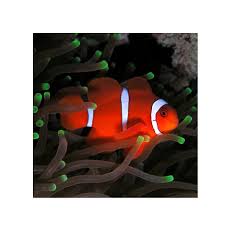Chinese fresh tea has long been an essential part of Eastern culture, not only as a beverage but also as a nutritional companion to various foods. The art of pairing tea with food enhances flavors, improves digestion, and maximizes the health benefits of both elements. Traditional Chinese medicine and culinary experts have carefully developed tea-food pairings that promote overall well-being and balance in the body.

This article explores the nutritional benefits of Chinese fresh tea, the principles of pairing tea with food, and the best combinations of tea with superfoods, nuts, proteins, dairy, and desserts.
The Nutritional Value of Chinese Fresh Tea
Fresh Chinese tea contains a variety of antioxidants, polyphenols, amino acids, and minerals that provide significant health benefits. Here’s a breakdown of its key components:
1. Antioxidants and Polyphenols
- Green tea, white tea, and oolong tea are rich in catechins and flavonoids, which help fight free radicals and reduce oxidative stress.
- These compounds contribute to anti-aging, heart health, and cancer prevention.
2. Caffeine and L-theanine
- Tea contains natural caffeine, which boosts energy and mental alertness.
- Unlike coffee, tea provides a smoother energy boost because L-theanine calms the nervous system, preventing jitters and crashes.
3. Minerals and Vitamins
- Chinese tea is a natural source of potassium, magnesium, calcium, and vitamins C, B, and E, which support immune health and metabolism.
4. Detoxification and Digestion Benefits
- Many teas, such as pu-erh and green tea, aid in digestion, help detoxify the liver, and promote gut health.
Principles of Pairing Tea with Food
1. Balance of Flavors
Tea should either complement or contrast the flavors of the food:
- Complementary pairing: Similar flavors enhance the overall taste experience.
- Contrasting pairing: Opposing flavors balance each other, preventing overpowering tastes.
2. Matching Tea Strength with Food Intensity
- Light teas (white tea, green tea) pair well with mild dishes like salads and steamed vegetables.
- Medium-bodied teas (oolong, jasmine) go well with grilled meats, seafood, and nuts.
- Strong teas (pu-erh, black tea) match rich, heavy foods like roasted meats, cheese, and desserts.
3. Health-Based Pairing
- Some teas enhance digestion and should be consumed with fatty meals.
- Others promote calmness and relaxation, making them ideal for evening meals.
Best Tea and Food Pairings for Maximum Nutrition
1. Tea and Superfoods
Matcha Green Tea + Chia Seeds
- Why? Matcha is rich in EGCG (Epigallocatechin Gallate), an antioxidant that fights inflammation. Chia seeds are packed with omega-3 fatty acids and fiber, which support heart health and digestion.
- How to enjoy: Add matcha powder to a chia seed pudding or drink matcha tea alongside a chia-based breakfast bowl.
White Tea + Blueberries
- Why? White tea has the highest levels of catechins, which work synergistically with the anthocyanins in blueberries to enhance brain function and memory.
- How to enjoy: Serve a light, floral white tea with a bowl of fresh blueberries or a berry smoothie.
2. Tea and Nuts
Oolong Tea + Almonds
- Why? Oolong tea is semi-fermented and helps break down fats. Almonds contain healthy fats, vitamin E, and fiber, making them a perfect snack.
- How to enjoy: Drink oolong tea with a handful of raw almonds as a mid-morning or afternoon snack.
Pu-erh Tea + Walnuts
- Why? Pu-erh tea aids digestion and supports gut health, while walnuts provide omega-3s and brain-boosting nutrients.
- How to enjoy: Pair a cup of aged pu-erh tea with toasted walnuts for an energy-boosting snack.
3. Tea and Protein-Rich Foods
Green Tea + Salmon
- Why? Green tea’s catechins help reduce inflammation, and salmon is rich in omega-3 fatty acids, which support brain and heart health.
- How to enjoy: Enjoy grilled salmon with a cup of warm green tea or add green tea powder to a salmon marinade.
Jasmine Tea + Chicken Breast
- Why? Jasmine tea contains polyphenols that promote calm digestion, while lean chicken provides high-quality protein for muscle repair.
- How to enjoy: Serve steamed jasmine tea with a ginger-soy grilled chicken breast.
4. Tea and Dairy-Based Foods
Black Tea + Cheese
- Why? The bold tannins in black tea cut through the richness of cheese, balancing the flavors.
- Best pairings:
- Earl Grey + Brie (citrus notes enhance creamy cheese)
- Lapsang Souchong + Aged Cheddar (smoky black tea complements sharp, strong cheese)
Oolong Tea + Yogurt
- Why? Oolong’s fermentation complements the probiotics in yogurt, supporting gut health and metabolism.
- How to enjoy: Drink oolong tea alongside Greek yogurt topped with honey and nuts.
5. Tea and Desserts
Chrysanthemum Tea + Honey Cake
- Why? The floral notes of chrysanthemum tea pair well with light, mildly sweet desserts like honey cake or almond biscuits.
- How to enjoy: Serve chrysanthemum tea warm with a slice of honey cake.
Pu-erh Tea + Dark Chocolate
- Why? Pu-erh’s earthy, aged taste complements the bitterness of dark chocolate, enhancing the depth of flavors.
- How to enjoy: Drink pu-erh tea with 70-85% dark chocolate as an evening treat.
Green Tea + Matcha Cheesecake
- Why? The natural bitterness of matcha balances the creamy sweetness of cheesecake, creating a harmonious combination.
- How to enjoy: Pair hot matcha green tea with a small portion of matcha-flavored cheesecake.
Conclusion
Pairing Chinese fresh tea with nutritious foods enhances both the flavor and the health benefits of each component. By understanding how different teas interact with food, you can create well-balanced meals that support digestion, boost energy, and promote overall wellness.
Whether you are enjoying a refreshing green tea with salmon, a rich black tea with aged cheese, or a delicate white tea with fresh berries, these pairings offer a delightful and nourishing way to experience the best of Chinese tea culture and healthy eating.
Start exploring your own tea and food pairings, and discover new ways to elevate your diet with the powerful combination of tea and nutrition!

Leave a Reply